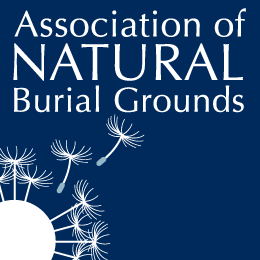Private land burialThis guide on home burial is relevant in England and Wales, but not for Scotland. Whilst burial on private land is a relatively straightforward matter, free of many of the restrictions and legal hurdles which might be imagined, it does need to be thought through carefully. The number of private land burials which take place each year in the UK is quite small, and it is possibly for that reason that there are misconceptions widely-held not only by members of the public, but by some planners and funeral professionals as well. With regard to rules and regulations the following are imperative: • You must have the consent of the owner of the freehold of the land • The freeholder should check that there are no restrictive covenants attached to the title deeds or registration of the property that prohibit burial • You must be able to satisfy the Environment Agency that the burial will not take place within certain distances of specific types of water; i.e. - At least 10 metres from any ‘dry’ ditch or field drain - At least 30 metres from any spring or any running or standing water - At least 50 metres from any well, borehole or spring that supplies water for any use • There must be a minimum depth between the settled soil level and the top of the coffin or shroud (see note below) • The person responsible for the burial must obtain a Certificate of Authority for Burial* from the Registrar of Births & Deaths (or in special circumstances from the Coroner) before the burial takes place.(*This is routinely issued at the time of the registration of the death, and more commonly referred to as 'the green form'.) • Within 96 hours of the burial, the slip attached to the bottom of the Certificate for Burial or Cremation must be completed with the date and place of the burial, and returned to the Registrar of Births & Deaths • The owner (or owner’s agent) of the land on which the burial has taken place must prepare and keep a burial register in a safe place Those are the essential regulations which must be followed. What about planning permission?
The role of the local authorityPerhaps the single fact regarding private land burial which most surprises people at the outset is that for a limited number of interments, planning permission is not required. The reason is simple - the presence of a very small number of burials would not constitute a ‘material change of use’, hence no such consent would be required. The Natural Death Centre’s only caveat here is that case law has seen the use of the words ‘limited’ and ‘restricted’ rather than a definition which sets out a precise number. Logically what might be a reasonable number in rural farmland should exceed that in a suburban garden, but as no definitive ruling can be cited it would be wise to err on the side of caution and consider that more than two burials could encourage the planning authority to require the submission of an appropriate application. Strictly speaking there is no need, either, for an approach to the local authority with regard to the observance of distances from water. It is better to be sure on this point, though, by discussion with the local council’s Environmental Health Department. With their local knowledge they should be able to give a speedy opinion; however, there may be something of a postcode lottery here, and if you encounter a council officer who is at all fazed because this is their first such enquiry it would be as well to draw their attention to the Environment Agency’s leaflet ‘Funeral practices, spreading ashes and caring for the environment’ on which the Natural Death Centre was consulted. It covers ‘home burials’ and sets out the criteria listed above. There are no environmental implications from the burial of cremated ashes so there would be no need to contact the Environmental Health Department in that event.
Grave digging and grave depthGrave digging can be hard work! Hand digging is the preferred ‘green’ option, but a small mechanical digger will reduce the workload considerably provided that access to the chosen site can be provided easily and without damage to the local environment. Although the majority of professional grave diggers work for local authorities, there are freelance grave diggers throughout the UK should you wish to employ someone for the task. Grave preparation should include a preliminary excavation to ensure that standing water does not gather when it is first dug, and that the soil is not too sandy. There is no legal minimum depth for a burial. However, the Ministry of Justice recommends that natural burial ground operators place a minimum of two foot of soil between a coffin lid and the ground level. A shallow grave is safer and easier to dig and it is felt by many that the recycling of the body is quicker and less environmentally harmful if nearer to the surface with access to oxygen. Remember that an open grave can be hazardous, and should be adequately protected before the burial takes place. If the chosen plot is in an area which is crossed by a public footpath it may be advisable to apply for the temporary closure or diversion of the path under the provisions of the Wildlife and Countryside Act 1981 to ensure that there is no risk to the general public while there is an open grave and that there is privacy at the time of the burial. More information on grave digging is contained in a technical leaflet available in pdf form from the NDC (click here)
Some points to considerThere may be far fewer regulations than might have been imagined, but it is advisable to give careful consideration to some of the possible consequences of private land burial. What about access to visit the grave should the property be sold in the future? It would be possible to create a right of access for grave visits by way of an easement, but such an arrangement may deter a purchaser. What effect would a burial or burials have on the property value? Over the years it has been argued by some that an adverse effect would be inevitable, but that would be difficult to prove in any particular case. What is clear is that some properties will be far better suited than others. One or two burials in a quiet favourite spot near a tree in a rural paddock are unlikely to have the same impact as a burial in a suburban back garden. Although planning permission is not required for a limited number of burials, some built memorials would attract the attention of the planning authority. This need not be a concern if you just intend to plant a tree. One final point with regard to people in authority. As private land burial is not a common event it is quite likely to attract attention and if you give your local police advance notice of the funeral they will not be wrong-footed into suspecting some improper act!
Further information and adviceCopies of the Environment Agency’s leaflet referred to above may be obtained from them, click here to view. It is available in several languages including English and Welsh. Keeping a burial register does not mean that you have to purchase a special book from a legal stationers. A simple document will suffice, provided that it records the essential details of the deceased, and the date and place of interment with an accompanying plan showing the grave’s location. The Natural Death Centre can provide a sample form. The Natural Death Centre is widely regarded as a primary source for independent advice on private land burial. It can also provide details of professional services and suppliers such as manufacturers of biodegradable coffins.
Michael Jarvis and The Natural Death Centre April 2010 |
|
The New Natural Death Handbook fifth edition is out now, this book is a must read for everyone. Completely revised and expanded into a boxed set of three books... Read more Credit to Will Whipple (photographer) ______________ Links and Resources
|
Home | Contact us | Log in | Donate ![]()
Registered Charity
Number. 1091396
Helpline: 01962 712 690
Normal call rates apply








